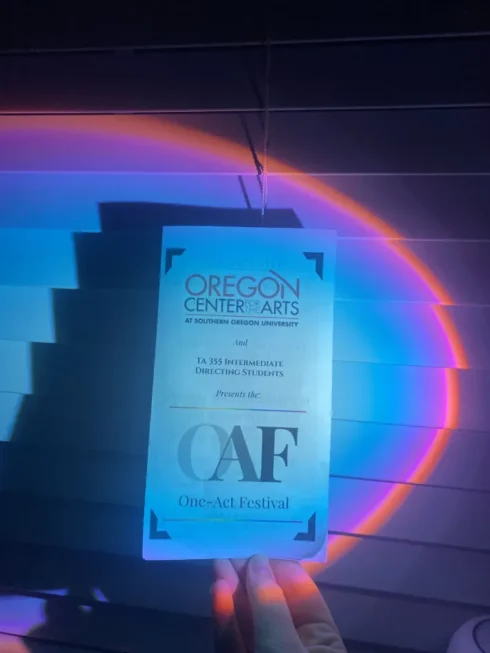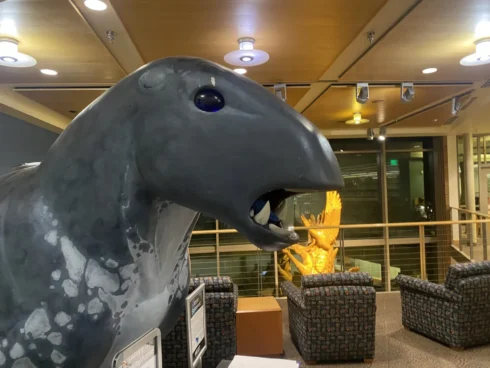On Wednesday Southern Oregon University President Mary Cullinan held a State of the University Address at the Stevenson Union to discuss SOU’s latest events and undertakings.
“On our work toward a vision of SOU as a distinctive, destination campus, we’ve been focusing on four words: collaboration, community, creativity and adventure,” Cullinan said.
SOU has been very involved with the community over the past few months, Cullinan said, citing examples such as hosting the 28th Annual Best of the Best Student Art Show and offering contributions to the Women’s Leadership Conference, the Cesar Chavez Leadership Conference and the Ashland Independent Film Festival.
SOU has also been working to become more sustainable and reduce its carbon footprint, Cullinan said.
The university recently partnered with the Bonneville Environmental Foundation to become the first college in the nation to completely offset 100 percent of its water use through the purchase of BEF water restoration certificates. The money will go to help restore water to Sevenmile Creek in the Klamath Basin, a waterway that has been severely damaged by over-irrigation.
“This initiative is the first of its kind on any campus,” Cullinan said. “We’re the only campus in the country that is doing this.”
Students are also working with BEF to put solar panels on the roof of the SU and hopefully on the roof of the new North Campus Village dorms as well, which Cullinan said is “looking wonderful, ahead of schedule as well as ahead of budget.”
Apart from the progress on the North Campus Village, which “sends an impressive message to the community that may still think of SOU as a sleepy little college,” plans are moving forward for the renovation of the Science Building and a student-supported recreation center.
One of the major topics Cullinan discussed is the program prioritization process, which she described as a “huge task and not a popular one, taking up large amount of time.”
“[Prioritization] is not the current budget process and it is not a budget cutting exercise,” said Cullinan, saying that prioritization is intended to inform future campus planning and decision making. “It is a process that universities all over the country are undertaking.”
Two forums about prioritization were held this week in order to answer questions and discuss issues involved in the process. The academic support prioritization report will be released May 1, the academic programs report on May 15. For more information about the prioritization process, read the Siskiyou’s article here.
Another SOU undertaking making great progress is the Honors College. A class for fall 2013 has been found; about half of the students are from Oregon and half are from the rest of the country. Cullinan and the SOU Foundation Board have been working to raise scholarship funds for the students. Honors College Director Ken Mulliken will be joining us in June to head the program.
Other notable occurrences going on right now are the introduction of the House model in fall of 2013, and the development of a business plan for a sustainability center and farm on SOU’s property near the ScienceWorks Museum.
The PEAK program, an initiative to create jobs on campus, has been making good progress, Cullinan said. PEAK stands for Professional Experience, Achievement, and Knowledge. The Hawks program is also coming along, Cullinan said, which gives opportunities to non-traditional students working toward a baccalaureate degree.
Cullinan ended the address with an emphasis on keeping SOU students, especially first year students, in school.
“We need to think about, learn about, and develop tools and techniques that help students stay engaged and succeed after graduation in this volatile and complex world,” Cullinan said. Only then, she said, can we work toward a vision of SOU that is “thriving instead of just surviving.”


